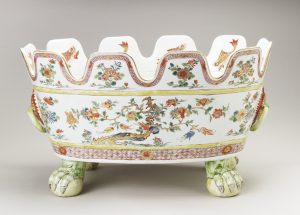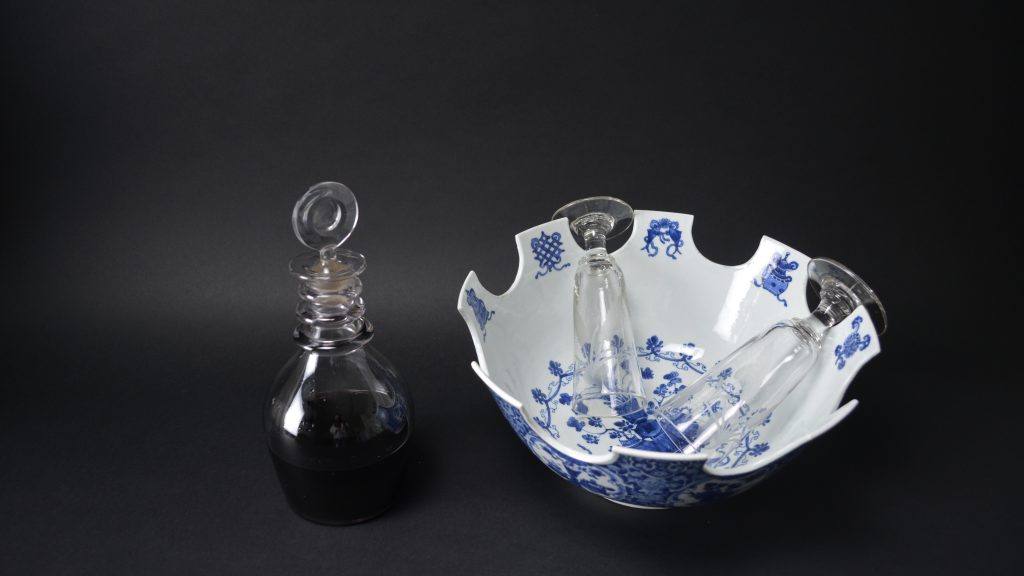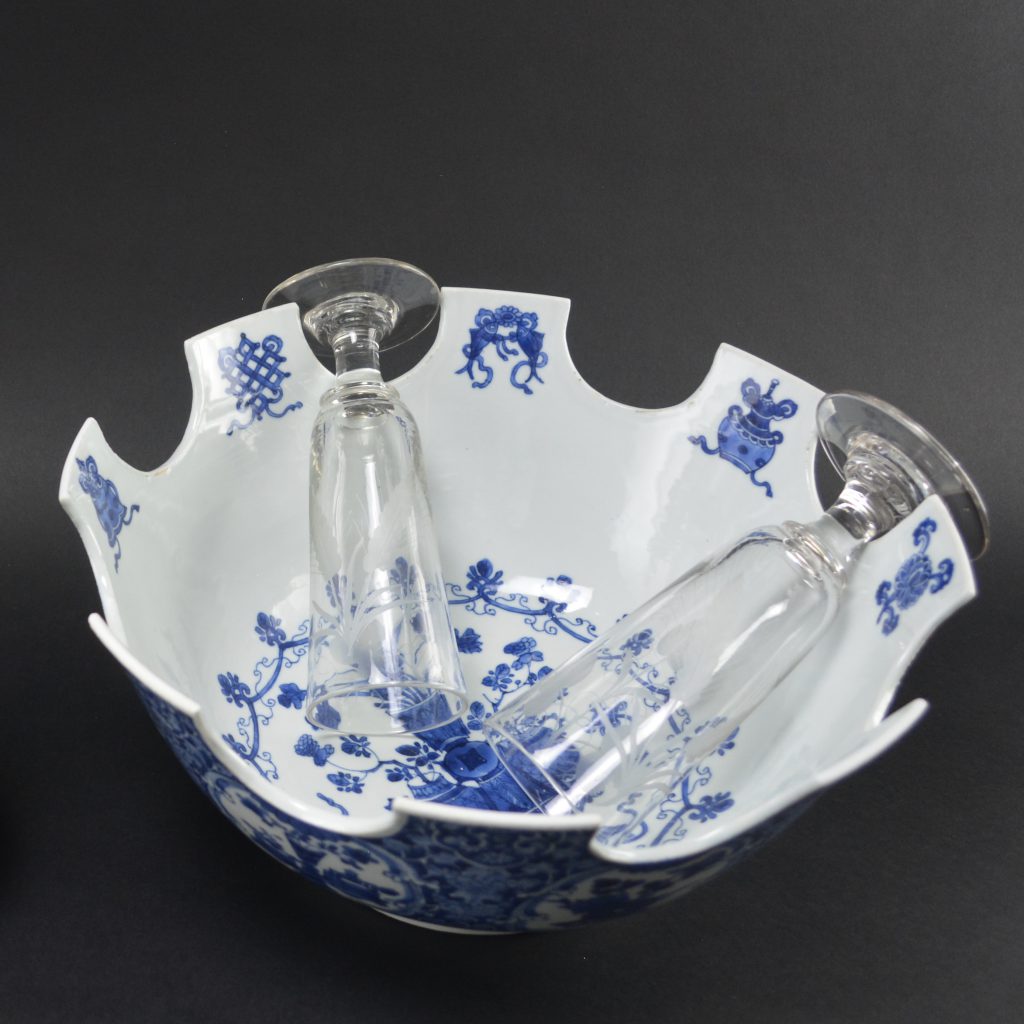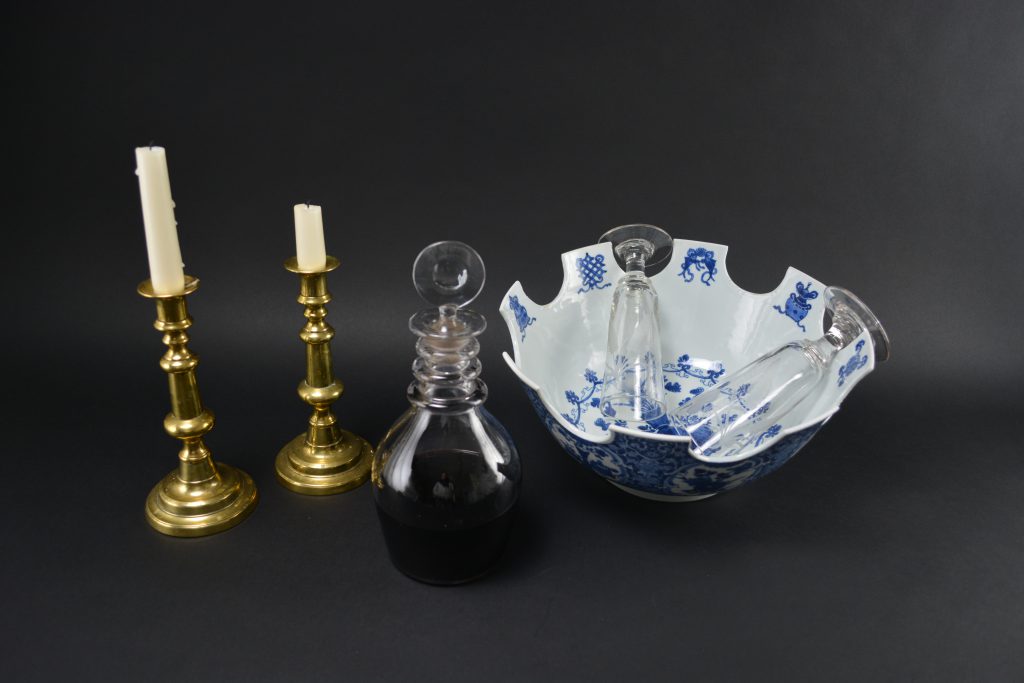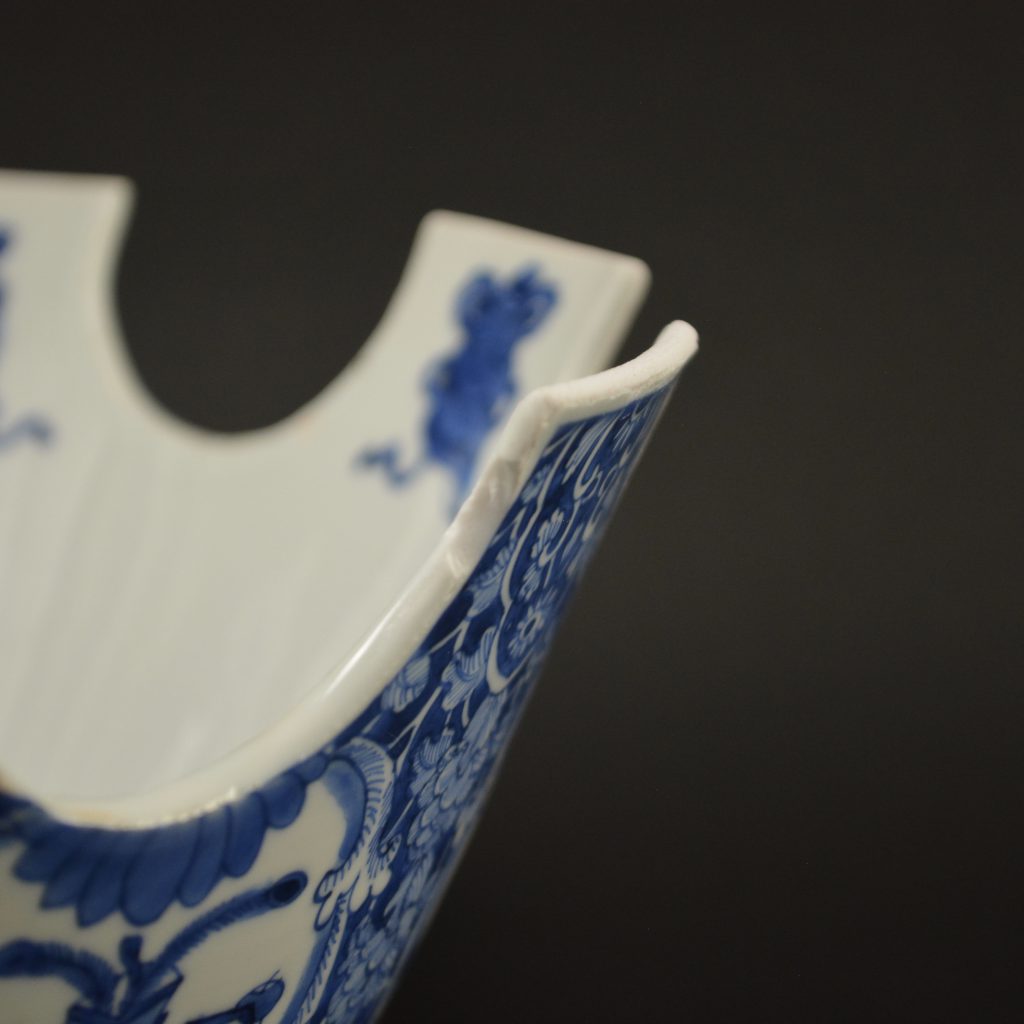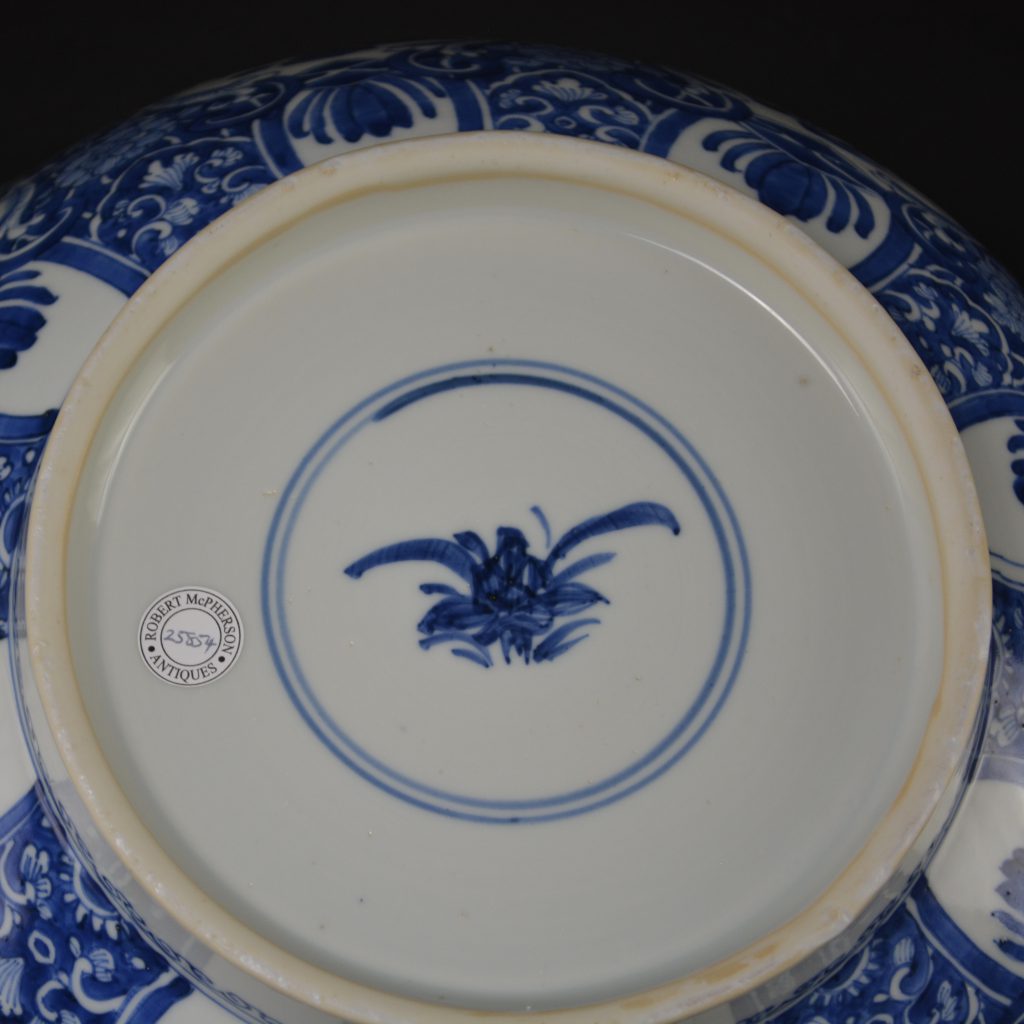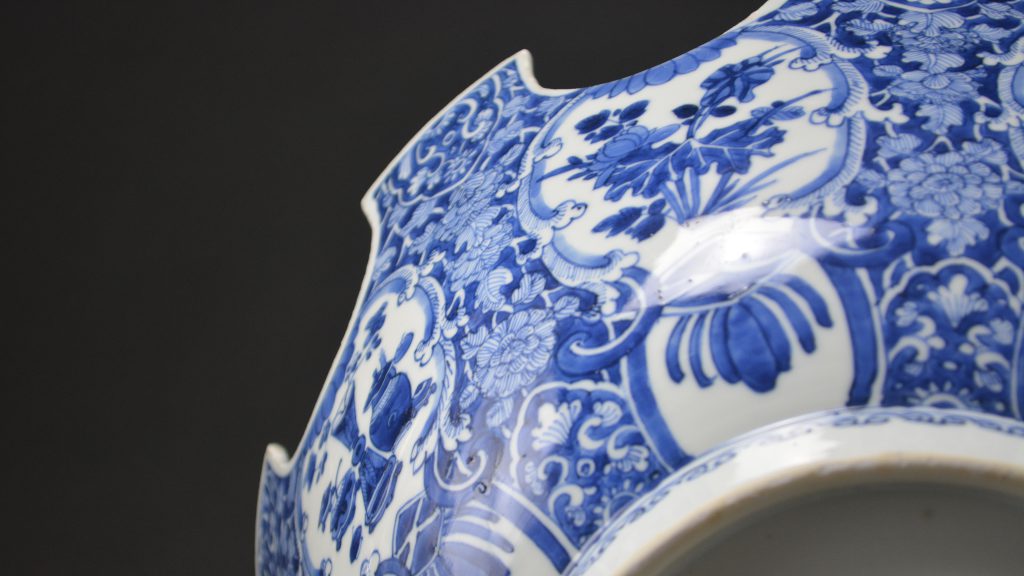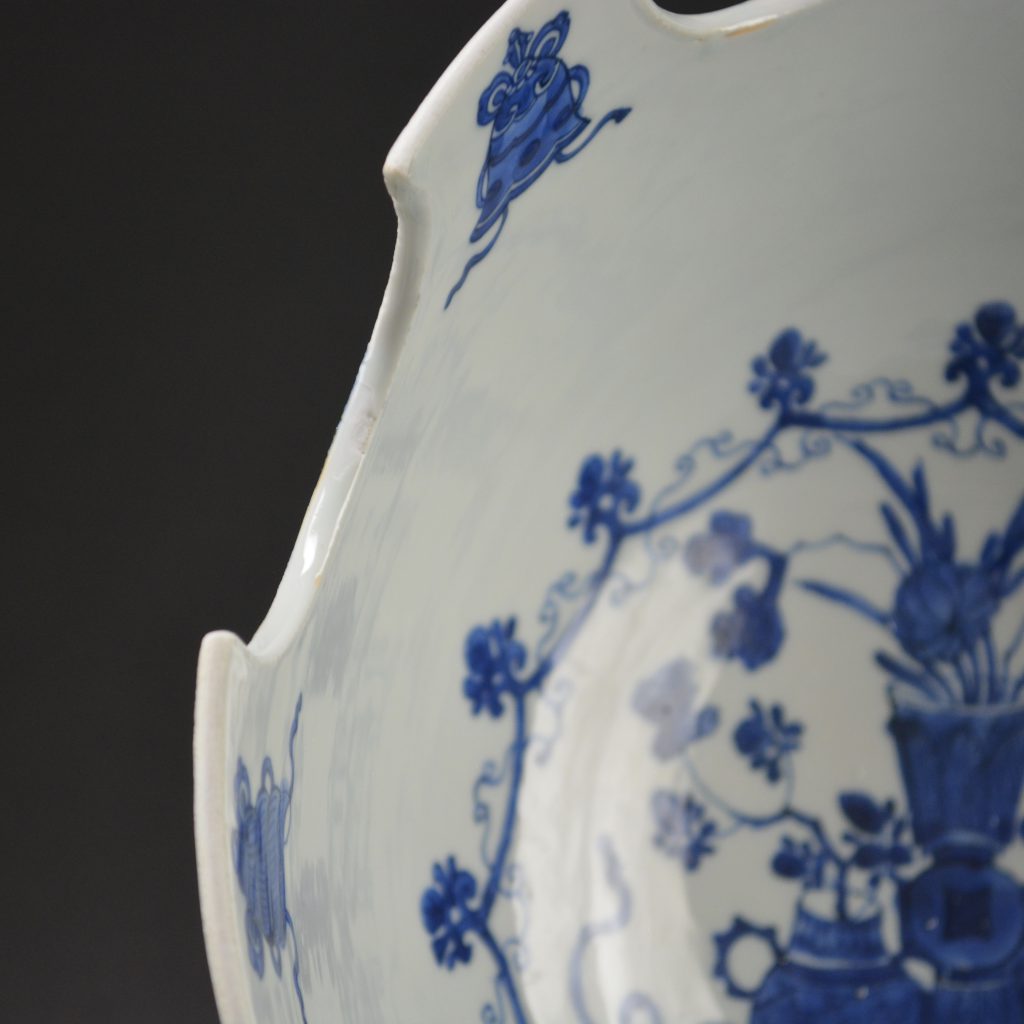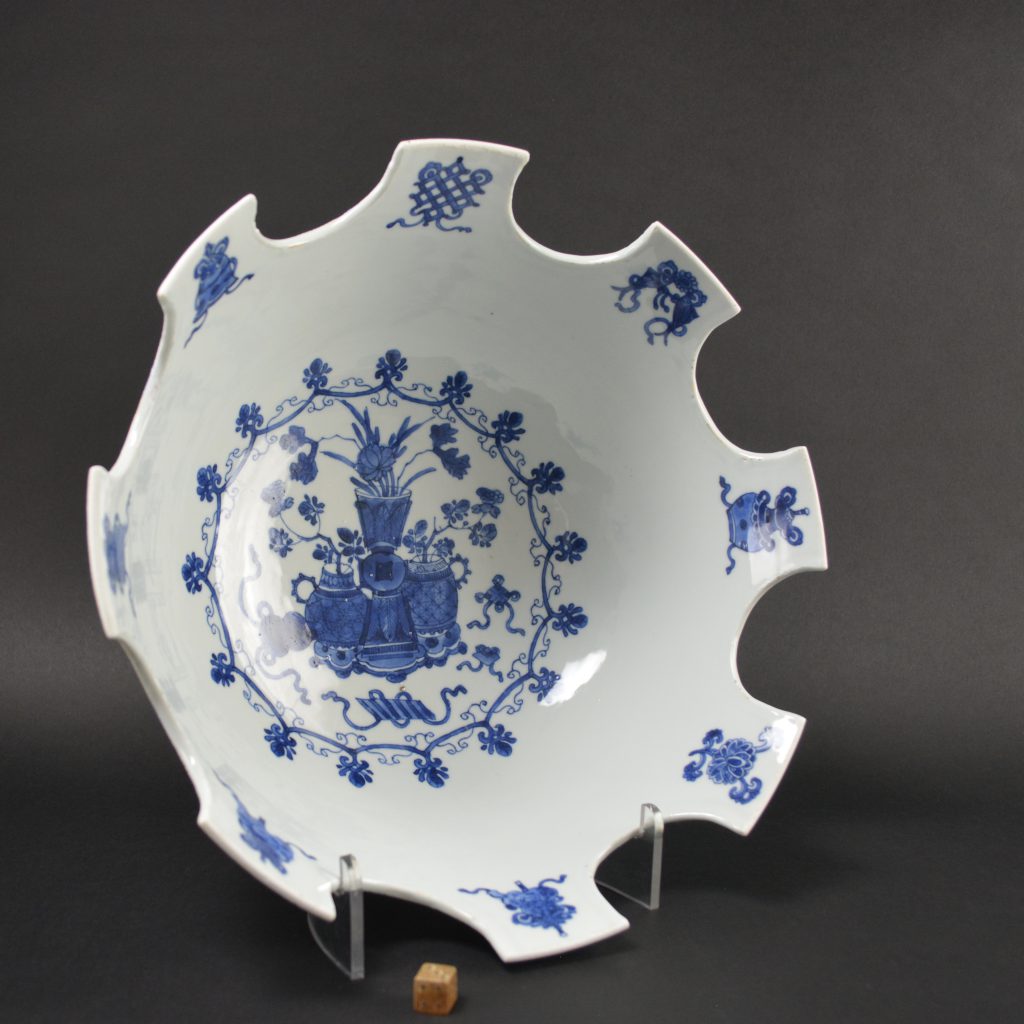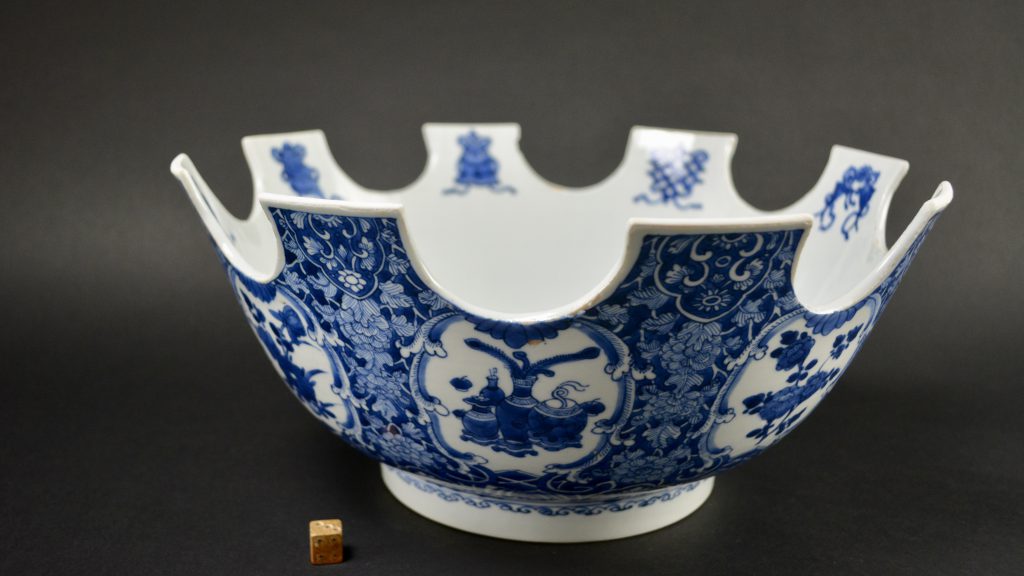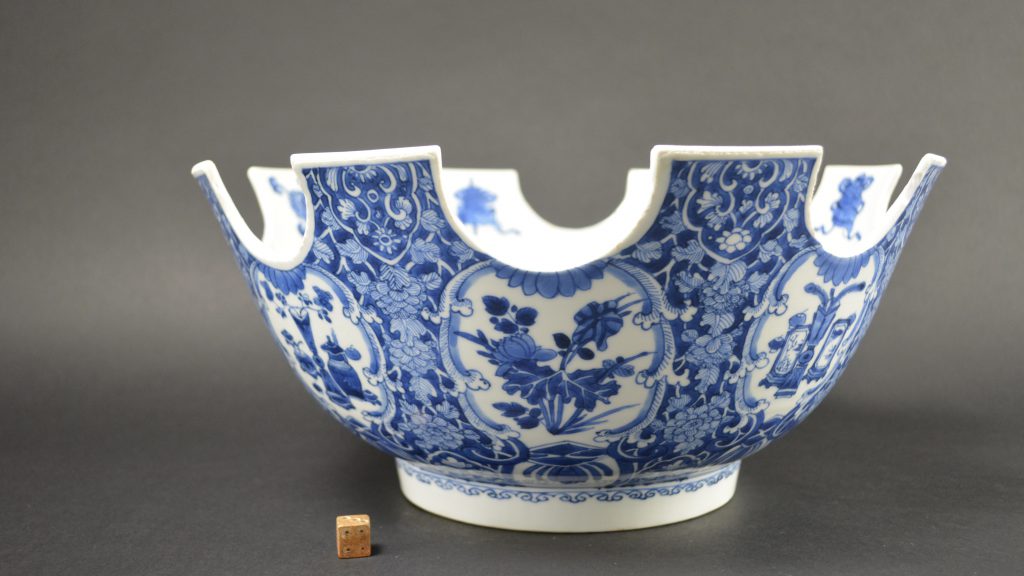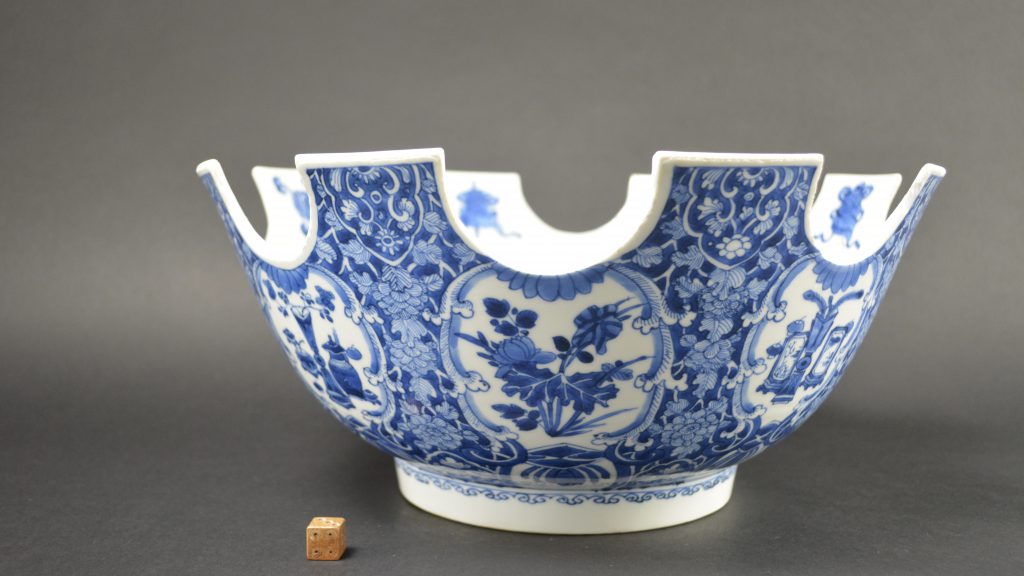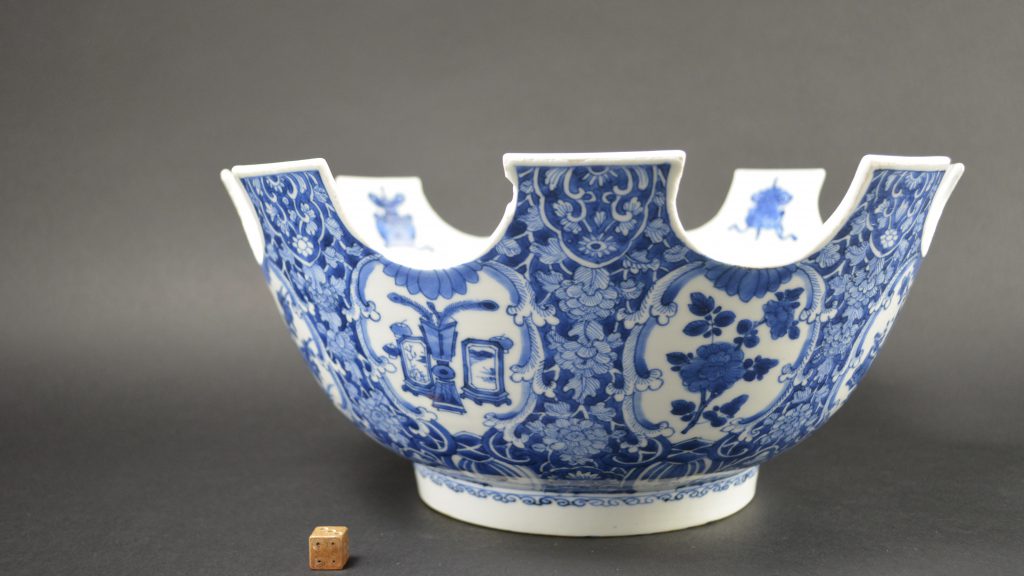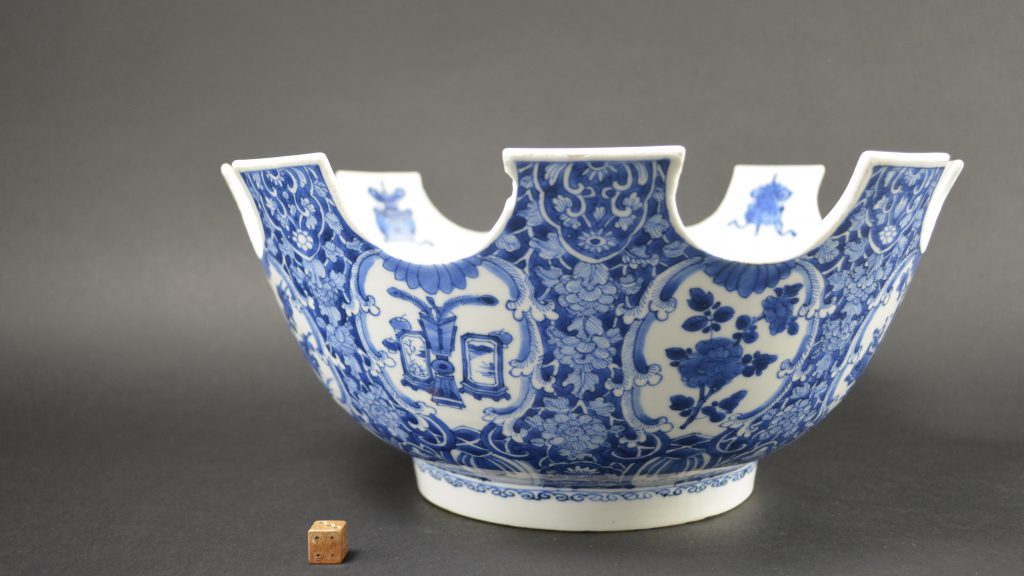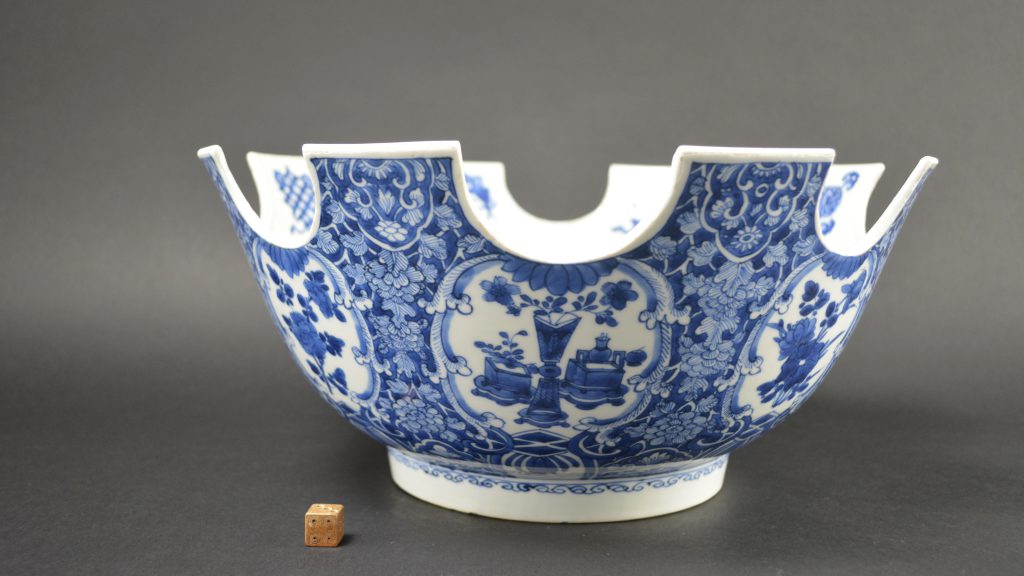
A Fine and Rare Kangxi Porcelain Monteith
A Rare and Fine Kangxi Blue and White Monteith c.1690-1720. This rare form emulates English silver examples that were fashionable from about 1680, their distinctive rims were made to hold wine glass bases so their bowls could cool in the water. Despite being decorated with Chinese subject matter and symbols this object looks entirely Western. It is similar to Delftware in its appearance with its deep blue ground, oval cartouches and borders reminiscent of Baroque scroll-work. The cartouches are filled with flowering lotus and groups of ‘antiques’ which are repeated in the well of the bowl in what is sometimes referred to as the ‘Hundred Antiques Pattern’. Large Chinese bowls are often cracked or broken, this Monteith is even more venerable to damage but it has survived in remarkably good condition.
SOLD
- Condition
- In good condition for this type of object - the tops of the indented rim are polished (the glaze has been rubbed off because the glaze was either fritted or chipped). There is one deep chip below the corner of one of the U-shaped scalloped sections and a shallow chip inside another.
- Size
- Diameter 32cm (12 1/2 inches)
- Provenance
- From a Private Collection
- Stock number
- 25854
- References
- See Below
Information
Kangxi Porcelain Monteiths :
The first Monteiths were made in the West during the last third of the 17th century, Chinese versions were made during the Kangxi period (1662-1722), there are several versions known but all are rare. Monteiths are deep bowls with a scalloped rim, originally of silver but subsequently made porcelain and pottery. The function they served was to cool the bowls of wine glasses. The bowl of the glass would rest within the bowl of the Monteith, held by their foot on the lower part of the scalloped rim, so as not to slip in the Monteith. Generally, Monteiths were made to hold six to eight glasses. The form was popular during the eighteenth century but they were also made in the 19th and early 20th century.
The name derives from an Oxford student, monsieur Monteith (Monteigh). It is a term that was coined at the period and was described by the English antiquary Anthony à Wood (1632-1695) in 1683.
"This yeare in the summer time came up a vessel or bason notched at the brims to let drinking glasses hang there by the foot so that the body or drinking place might stand in the water to cool them.
Such a bason was called a 'Monteith' from the fantastic Scott called 'Monsieur Monteigh' who at the time or a little before wore the bottom of his cloake or coate so notched".... Anthony à Wood 1683.
The Basingstoke Trophy
A rare Monteith by Robert Cooper,
Made in London 1688
The design around the sides of the bowl shows a racing scene appropriate for its use as a race prize.
It was won by Edward Chute at the Basingstoke Races on the date inscribed - Basingstoke Plate Octr: ye 2d:1688.
Victoria and Albert Museum, London.
(Silver Room 65, The Whiteley Galleries, case 5, shelf 2)
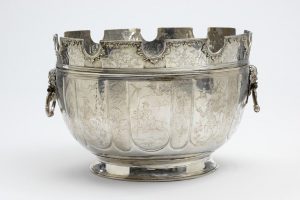
An Extremely Rare Glass Monteith
Made by William Gibbs, with his name and the date 1700.
The piece was engraved (with a diamond point) with the arms commemorating the marriage of William Gibbs of Horsley Park, Essex,
and the heiress Mary Nelthorpe and inscribed with the name of the groom.
Around the rim are inscriptions in Italian, Hebrew, Slavonic, Dutch, French, and Greek (such as "Fear God and honour the King" in the main panel).
The Metropolitan Museum of Art accession number 43.77.2
(For some inexplicable reason it is not on public show)
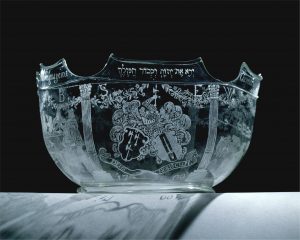
A Kangxi Verte-Imari Monteith c.1710 - 1720
This large Kangxi polychrome Monteith from the Royal Collection is at Clarence House, Prince Charles's official residence.
It was originally purchased by George IV (1762-1830)
One is in the inventory at the Royal Pavilion, Brighton, as ‘A large China Cistern, white ground, scalloped edges, on green claw and white ball feet, - enamelled with borders, trees, & flowers, rosette & ring handles, gold fish, crabs and flowers within, twelve and a half ins high, fifteen & a half, by twenty one & an half inches over’ (1829B). A pair answering this description was sent to Buckingham Palace in March 184 (incomplete date on-line) . One was noted in the Long Gallery at Windsor Castle in 1914, and one in the Yellow Drawing Room at Buckingham Palace in 1921.
C&J : Ayers, J., 2016. Chinese and Japanese Works of Art in the Collection of Her Majesty The Queen. 3 vols., London – C&J 507-508
